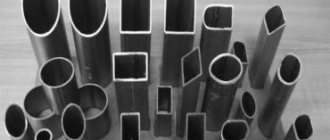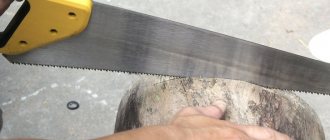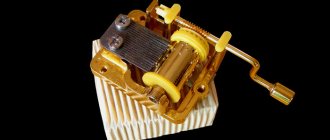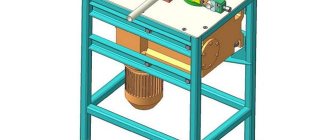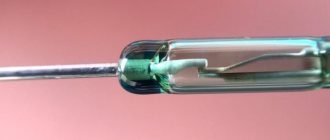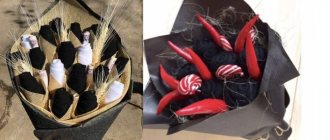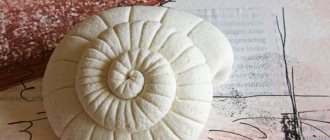Fans of active recreation will enjoy rich leisure time and new experiences, such as target shooting with a homemade bow or hunting. How to make a bow from PVC pipe if you have little experience? Those who are interested in this issue should familiarize themselves in detail with the technology, which is not complicated. However, if the first pancake is lumpy, then there may be shortcomings here too, and it is important to rely on tips from specialists who are willing to share similar experiences.
You can build a bow and arrow from unnecessary pieces of PVC pipes of different diameters.
Preliminary remarks
If you want to try archery, there are several options. You can sign up for the appropriate section, or buy a bow at a sports store, or borrow it from friends. However, not every city has sections, the cost of sports instruments is high, and friends may also not have a bow.
Therefore, the most reasonable solution in this situation is to make a bow yourself. Of course, you can make it using old technology, from wood and other traditional materials. But, again, the manufacturing materials cost a lot, and the process itself is complicated, long and labor-intensive.
Fortunately, the development of technology has given everyone the opportunity to learn how to make a bow from a plastic pipe. The process is also not so simple, but it is quite feasible. It is worth noting that craftsmen make various crafts from polypropylene pipes, which are very original and practical.
The main thing is to have a device capable of heating a plastic pipe with thick walls (from 3 mm). In addition, in any case, you will have to worry about choosing the material for the bowstring.
Making a bow from a PVC pipe with your own hands is technologically sound: polyvinyl chloride is a modern material, flexible enough and at the same time durable to withstand the tension of the string both at rest and before shooting.
From a thicker pipe, with a conscientious and careful approach, it is quite possible to make a bow that is not inferior in performance to crossbows and professional sports products. If you buy a thinner tube, say half an inch, you can make a much less powerful and safer children's bow.
Using a construction hairdryer, the bow material from a plastic pipe is heated to a temperature of about 180°C: this is enough to freely bend the water pipe, giving it the required shape.
It should be noted that before making an arrow bow or any other elements from a PVC pipe, you must familiarize yourself with the requirements for the purchased pipe.
Characteristics of PVC water pipe for adult onions:
- product diameter - three quarters of an inch;
- outside pipe diameter – 26.7 mm;
- the length of the purchased plastic product is about 3 m, but one and a half meters will be enough for one bow;
- the upper threshold of working pressure in the pipe is about 33 atm.
Despite the seeming optionality of strictly following these parameters, bows with the best characteristics are obtained from such polymer pipes; if a pipe of a smaller size, or less strength, or made of a different material is used, it is impossible to vouch for the result.
However, if you want to experiment and have enough time and money, you can, using the general manufacturing scheme, make an ideal bow for yourself that will last for many years. Be that as it may, each amateur creates a bow from PVC pipe at his own risk, for personal use, and only he is responsible for whether the result is satisfactory or not.
Making a shelf for the arrow
To make a shelf for the arrow you will need a piece of pipe and three toothbrushes. To begin with, you need to cut a blank in the form of the letter T or G from a piece of pipe no less than ten centimeters long. The upper part of this letter will be a half-ring of a shelf, into the slot of which an arrow is inserted. And the lower part, the leg, is fastened to the cavity of the handle.
In order to form a slot into which the arrows will be inserted in the future, the workpiece must be placed on a tube of larger diameter. And to form the leg of the shelf, you will need to connect the second part to the handle, and smooth the leg into its shape with your hands. You will have to act with both hands. With one hand, hold the half-ring from moving and opening, and with the other, press the handle against the half-ring, while simultaneously pressing the leg of the handle, giving it the shape of that very handle.
It came to toothbrushes. In order not to damage the bristles when heated, you just need to wrap them with tape. Now, using a turbo lighter, we heat the brush, wait for it to melt, and, resting it on a flat surface, bend it. The result is a semicircle.
Now you need to separate all the excess and one of the three parts with bristles is ready. The bristles are held in the holes with aluminum clips. All that remains is to connect the finished parts with small screws.
Bow design made of plastic pipe
A pipe bow consists of the following parts:
- The base (handle) is what the bow is held by during preparation and the actual shot.
- The opening (window) for arrows is located in the center of the bow, through which the arrows are launched.
- Shoulders – provide stability to the structure; it would be a good idea to further strengthen them, for example, by wrapping.
- Notches for the bowstring and bowstring - bought in the store or purchased in other ways.
- Arrows are consumables, also purchased or made independently, possibly from the same pipe or from wood and other available materials.
What parts does an onion consist of?
This product consists of:
- Shoulder;
- Handles;
- Bowstrings;
- Strel;
- Final design.
To make a durable arm, a pipe blank one and a half meters long is used. The handle is also made from it, or supplemented with a wooden blank.
The length of the handle depends on the hand of the person who will use the bow. A strong fishing line is used for the bowstring.
The procedure for making a homemade bow
Before starting work, you need to acquire protective gloves for work and a non-flammable fabric that insulates heat well, with which you can bend the heated material without damaging the skin.
So, when all the materials are ready, how to make a bow from PVC pipe?
The manufacturing algorithm is as follows:
- Mark a section of the required length on the plastic pipe using a marker or other convenient tool.
- Mark the center of the pipe body, the areas that will need to be bent in the future, and the places for the notches for the bowstring on both arms to be bent.
- Use a heat gun to heat the first shoulder, flatten it and give it the desired shape.
- Allow the first curved arm to cool.
- Repeat the same steps for the second shoulder, allowing it to cool.
- Warm up the grip area, then bend it to give the specific geometry of the bow.
- Make a notch on each shoulder for the bowstring.
- Cut an opening in the body of the product for launching arrows.
- Pull the string until it reaches the required tension.
- After all work is completed, test the bow in a safe place.
Despite the abundance of tips on how to make a bow from a pipe, and the apparent simplicity of the instructions, the bow cannot always be obtained the first time, so you need to stock up on several additional pieces of water pipe elements in advance.
The most common mistakes made when making a product:
- incorrect heating of the pipe, associated either with insufficient heating and, therefore, the inability to bend the bow, or with overheating of the material and loss of elasticity;
- the use of insufficiently powerful equipment, as a result of which the plastic cools faster than the formation of bends is completed;
- attempts to bend the product without using a hair dryer and high-quality fixation of the future bow;
- overheating - in addition to the problem described above, can lead to cracking of the product during further use.
It also happens that, despite following the rules, the onion still does not come out. There's no need to be upset, you just need to try to make a new one.
Tips for making the perfect bow:
- The bow handle should be made to fit your palm, giving it a comfortable shape.
- You can vary the length, elasticity and other parameters of the bow, arrows and string according to your preferences.
- The cutouts for the bowstring must be treated as thoroughly as possible with abrasive agents so that it does not chafe the tense bowstring. You can tie an additional protective layer onto the notch, and then a bowstring onto it.
- You can also wrap the handle with a comfortable material (for example, leather) for easier grip.
- If you comply with the law, the bow's draw weight should not exceed 19 kg (for unlicensed products - 20 kg).
- Instead of a professional bowstring, you can use polypropylene or fishing cord and other ropes.
- To make it easier to bend the pipe, you can wrap the heated ends with foil and wrap them around a block of wood, then fix them in a vice and leave to cool.
- There's no need to rush. Each wrong action can nullify all previous efforts.
Brief step-by-step instructions
Before you start making a sports or hunting bow from PVC pipes with your own hands, it is worth understanding the main stages of the process.
- Measure the required length of plastic water pipe.
- Mark the center and the intended places for bending the ends and for notches for securing the bowstring on both shoulders, which will have to be bent.
- Proceed to warm up one shoulder and flatten it.
- Press the heated and flattened fragment until cooled, giving it the desired shape.
- Similarly, warm up and form the second shoulder.
- The section of the handle is heated to bend it to the characteristic shape of the bow.
- Notching on each side.
- Forming a window for the arrow.
- Bowstring tension.
- Testing a bow in shooting practice.
To form a bend, the pipe needs to be heated; for this you can use a hair dryer
Attention! The simplicity of the technology should not be misleading that everyone gets a bow from a PVC pipe for the first time. Errors cannot be ruled out, which experts take into account when repeating tests. There are several similar technologies, and each has its own rational grain.
Typical mistakes:
- The process of heating the PVC pipe is incorrectly organized, after which it is difficult to flatten and bend the shoulders;
- Without a hair dryer, it is impossible to achieve the required temperature throughout the entire heating section; the plastic cools down before the shoulder is formed;
- a futile attempt to flatten the pipe without heating and securing it with a clamp;
- overheating leads to brittleness of the material, a sign that PVC turns yellow;
- a plastic pipe overexposed under a hot hairdryer loses its elasticity, after which it is impossible to fully form the onion, the process will have to start over;
- If the bow was completed but was overheated during the manufacturing process, it may crack during testing.
It happens that everything was done according to the rules, but the bow, made with your own hands, does not hold its shape and bends in the opposite direction. Such a bow is simply thrown away and a new one is made.
Another problem is an “unsighted” bow, which makes it difficult to hit the target. They are used only for training muscle strength if there are several people willing to shoot with one bow. A plastic bow is inexpensive, and if you approach this process creatively, you will get a beautiful product.
To flatten the ends of the bow, you need to clamp them with clamps between wooden blocks; any other method will result in pipe deformation
How to make a crossbow
— Easy to repeat crossbow design.
School of survival
Tags: “weapon making”, “bow”
Vovan
comments:
A crossbow can also be made from plastic pipes, but you will have to assemble a whole package to increase the tension force of the bowstring.
12/11/2015
An optimist
comments:
It is easier to put a metal bow on a crossbow. And don’t worry about the plastic set.
12/28/2015
Krevets
comments:
The efficiency of this bow is zero. There is strength, but due to the large weight of the shoulders, the speed and force of the arrow will be small. Even a 13 kg laminate bow will easily outperform such a design, but I’m not talking about accuracy.
24.03.2016
Decoration
A bow must first shoot well and only then look good. Therefore, you should wait a little with decoration. It's better to shoot and test the bow first.
It is possible that after a while you will have to make small changes. Its handle and griffins can be shaped using a sharp knife and small files.
Alternatively, leather tape or linen cord can be wrapped around the handle to disguise the gluing area. One of the decoration ideas is to make an original inscription on the shoulders.
Good. The wooden arch with your own hands is ready!
Instructions for creating an arrow
To use a crafted bow, you need arrows. They are made of wood. Pine and birch are ideal. Although birch is more difficult to process, arrows from it are of higher quality. To make arrows, you can use a board, branches and wooden slats. When making it, it is important to ensure that the tip is sharp, since it must cut through the air and could stick into the object.
Arrows and tips
Often a nail is attached to the arrows. It is fixed with copper wire. But experts recommend cutting a square out of thin steel as a tip and bending it onto the arrow. If the bow is of high quality, then one arrow will not be enough; it is better to make about 5. Arrows are often made from boards or slats.
Manufacturing process:
- Marking. Using a tape measure, 1.5 cm squares are marked on the board. After marking, they are cut into arrows.
- Using a file or a sharp knife, the square pieces are ground to hexagonal. Next, they are processed with a file or a grinding machine until they are rounded, with a diameter of approximately 0.8 cm.
- Upon completion of processing, feathers are often attached to the arrow.
Feathering on a bow arrow
The crow ones are better suited, in the amount of 3 pieces per unit. The feather pile is trimmed using scissors. They are attached with threads. - Then it is made mainly from tin, a triangular tip. Fasten it with threads. It is necessary to make a cut on the arrow for the bowstring.
Arrow for a bow with a metal tip
If you follow all the recommendations and follow the order of work, you will use a homemade bow for a long time.
Selecting the length of the bow and string
The first thing you need to do when deciding to make a bow is to choose the right length of the string and the bow itself. Please note that depending on the length of the arms, the dimensions of the product will change. For example:
- arm span 155-165cm, bow 153-160cm and arrows 66cm;
- sleeve width is from 167 cm and above, so choose a length of 160 cm, arrows from 60 cm.
- the opening of a person’s arms is from 136 to 150 cm, the length of the bow should be 137-151 cm, arrows should not be longer than 60 cm;
DIY composite bow
Many people today are interested in how to make a folding arch, known to many as a composite arch. Let's just say, even more, the majority, especially hunters, are interested in how to make a powerful bow from such a small compound folding arm with their own hands.
Let's figure out what a compound bow is and whether it is possible to make such a small weapon yourself. So, making a compound bow with your own hands is quite possible. For these purposes, different materials can be used, but suitable designs should be selected. The materials are closely related to each other, which will make the weapon more powerful and stronger.
It is worth saying that in ancient times the folding arch was made of wood, its components were horn inserts and grain, due to which such an arch was considered more powerful, in contrast to a simple wooden arch of the same length. The glued bow consisted of several layers, it was a very powerful hand. Arrows from a homemade composite bow fly much faster.
The advantages of a DIY folding recurve bow compared to the classic solid wood version are obvious. Despite its compact size, such a bow is much more powerful, more convenient and easier to shoot. It must be said that almost all sports bows used at the Olympic Games are made as compound bows.
How to strengthen a compound bow with your own hands and make it more powerful
If you are interested in how to make a compound bow with your own hands, we invite you to watch a video review on our portal. You will then see the fine details of the manufacturing process of this type of arch, which play an important role in its functionality.
What is an onion?
A bow is a throwing weapon designed to fire special arrows. The shooting process is extremely simple and requires the shooter to lay the arrow, tension and release the bowstring. Thus, the energy accumulated in the bent arc of the gun is transferred to the arrow, which hits the target.
Despite the simplicity of the bow design, shooting from such a weapon requires a number of specific skills:
- First of all, the shooter must have sufficient strength to pull the bowstring.
- Classic and traditional models do not have a sight. In addition, the aiming process is somewhat complicated by the need to keep the bowstring taut.
- Firing a shot from a bow requires a number of actions, ranging from the correct placement of the arrow on the arc and ending with the release of the bowstring. Without precision in actions, there can be no talk of any targeting in this case.
The next stage in the development of this weapon is the crossbow, which arose around the 4th century BC. e. It does not require physical strength or special skills from the shooter. However, the bow has a simpler design and high rate of fire, so it was not forgotten even with the advent of firearms.
Tools and materials
To make such a bow you will need a minimum set of tools:
- airplane;
- knife.
- hacksaw;
In order for the bow to acquire the desired bend, it is best to use a special slipway.
You can also make it yourself from a board and several bars. To make a simple non-removable arch with your own hands, you will need:
- strong rope, leather tape, metal wire, thick thread for making a bowstring;
- thick rope or other suitable material for gripping.
- wooden or PVC pipe for making an arch;
When shooting from a bow, his shoulders should bend, while the bowstring practically does not stretch. The arrow hits the target precisely with the force of the weapon's bow, which straightens at the moment of the shot.

